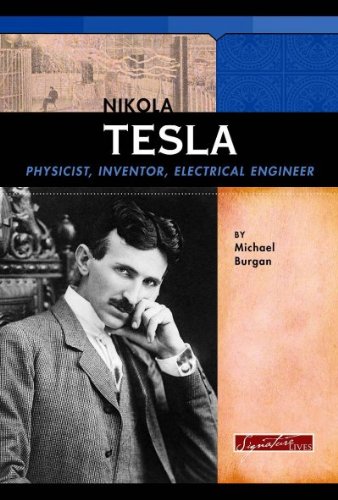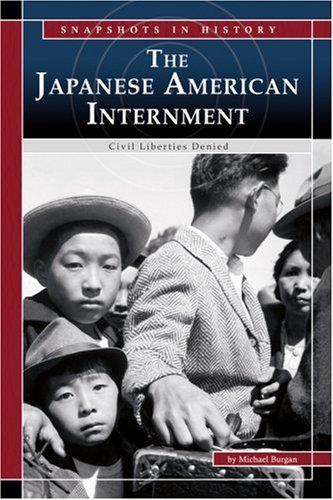-
Total Devastation
Michael Burgan
eBook (Capstone Press, Aug. 1, 2016)In an immersive, exciting narrative nonfiction format, this powerful book follows a selection of people who experienced the events of Hurricane Katrina. Z
Z
-
Battle of the Ironclads
Michael Burgan
Library Binding (Compass Point Books, Jan. 1, 2006)A look at the famous Civil War battle between the ironclads Monitor and Virginia (Merrimack) that began a new age for warfare at sea. X
X
-
Exxon Valdez
Michael Burgan
eBook (Compass Point Books, Jan. 1, 2018)The biggest oil spill in U.S. history that polluted the pristine waters of Alaska decades ago and killed thousands of birds, mammals, and fish, still haunts the people who are living with its aftermath. On Good Friday 1989, the huge oil tanker, Exxon Valdez, ran aground in Prince William Sound, spilling millions of gallons of crude oil into the water-oil that would eventually cover more than 1,000 miles of shoreline. Cleanup began immediately but there is still oil in the sound and Alaskans say life will never be the same. Z
Z
-
Lizzie Borden
Michael Burgan
Paperback (Aladdin, Oct. 2, 2018)Get a behind-the-scenes glimpse of what it takes to be considered one of the worst figures in history, with this fourth book in a nonfiction series that focuses on the most nefarious historical figures.Lizzie Borden took an axe, gave her mother forty whacks. When she saw what she had done, she gave her father forty-one. On August 4, 1892, the murders of wealthy and prominent Andrew and Abby Borden rocked the small town of Fall River, Massachusetts. The accused? Mild-mannered and highly respected Lizzie Borden, daughter of Andrew and stepdaughter of Abby. But did she actually do it? And if she did, why? Lizzie had as much to gain from the death of her father as anyone. Despite his wealth, Andrew did not believe in spending money and Lizzie had grown frustrated with the situation. And her actions in the days before the murder—trying to buy a type of strong poison—as well as those after the murder—burning a dress she claimed was stained—didn’t help. On August 11, Lizzie was arrested. But after a sensational trial, she was found not guilty. Rumors lingered. Stories persisted. And Lizzie continues to fascinate even today. W
W
-
Nikola Tesla: Physicist, Inventor, Electrical Engineer
Michael Burgan
Library Binding (Compass Point Books, Jan. 1, 2009)Revolutionary inventor and engineer Nikola Tesla has been called the father of the 20th century. The eccentric physicist developed the alternating current electric power system that lights up the world today. He also invented radio and had to spend years proving it. Tesla hoped the world would find peace and riches through his inventions. Even with his great intelligence, he had trouble finding either of those in his own life. W
W
-
Surviving Earthquakes
Michael Burgan
Paperback (Raintree, Aug. 1, 2011)Surviving Earthquakes will look at children who experienced earthquakes around the world, through history and up to the present day. S
S
-
Exposing Hidden Worlds: How Jacob Riis' Photos Became Tools for Social Reform
Michael Burgan
Paperback (Compass Point Books, Aug. 1, 2017)President Theodore Roosevelt called Jacob Riis "the best American I ever knew." The pioneering photojournalist, an immigrant from Denmark, drew attention to the poverty and evils of slum life in the late 1800s. Riis won national acclaim when his photos illustrated his bestselling book How the Other Half Lives. The book focused on the difficult time immigrants faced as thousands of newcomers flooded into the United States each year. Riis called for reform and hoped to prod government officials to help the poor people who were forced to live under horrible conditions. The impact of Riis' photos came from capturing the poor and homeless as they lived and worked, with the subjects' eyes often staring directly into the camera. The great photographer Ansel Adams called them "magnificent achievements in the field of humanistic photography." But the reforms that came from Riis' work have not eliminated urban poverty and homelessness, and important work remains to be done. W
W
-
Breaker Boys: How a Photograph Helped End Child Labor
Michael Burgan
Library Binding (Compass Point Books, July 1, 2011)Little boys, some as young as 6, spent their long days, not playing or studying, but sorting coal in dusty, loud, and dangerous conditions. Many of these breaker boys worked 10 hours a day, six days a week all for as little as 45 cents a day. Child labor was common in the United States in the 19th century. It took the compelling, heart breaking photographs of Lewis Hine and others to bring the harsh working conditions to light. Hine and his fellow Progressives wanted to end child labor. He knew photography would reveal the truth and teach and change the world. With his camera Hine showed people what life was like for immigrants, the poor, and the children working in mines, factories, and mills. In the words of an historian, the more than 7,000 photos Hine took of American children at work aroused public sentiment against child labor in a way that no printed page or public lecture could. Y
Y
-
Death at Kent State
Michael Burgan
eBook (Compass Point Books, Aug. 1, 2016)It didn’t seem possible. Four college students shot dead May 4, 1970, by Ohio National Guardsmen during a protest against the Vietnam War. The shootings at Kent State University would shock the nation and spark a mass student strike across the country, the only one in U.S. history. A photojournalism student’s photograph of a teen girl crying in anguish over a victim’s dead body would win the Pulitzer Prize and become a symbol of the antiwar movement. Z
Z
-
Jack the Ripper
Michael Burgan
Hardcover (Aladdin, Aug. 15, 2017)Get a behind-the-scenes glimpse of what it takes to be considered one of the worst figures in history, with this second book in a brand-new nonfiction series that focuses on the most nefarious historical figures.In 1888, London was terrorized by a mysterious man with a knife. Between the end of August and beginning of November, this man committed five known murders—possibly more. Then, just as suddenly as they started, the killings stopped. Dubbed “Jack the Ripper” by the press, he slipped through the dark, foggy streets of London’s Whitchapel district, targeting women and leaving no witnesses and no clues as to his identity. The police were stumped. The press went wild. But no one could find Jack the Ripper. Even today, Jack the Ripper continues to fascinate. Amateur detectives, known as “Ripperologists”, books, movies, and walking tours all focus on one question: who was Jack the Ripper? Get a little closer to finding out with this biography that takes a deeper look at Jack the Ripper…because while he may be one of history’s worst people, his legend lives on. S
S
-
George Washington Carver: Scientist, Inventor, and Teacher
Michael Burgan
Hardcover (Compass Point Books, Jan. 1, 2007)From the late 19th century into the 21st century, technological and cultural advancements transformed the world into a new and modern place. These advancements changed the way people lived, worked, and thought about themselves and the world. The combination of all these changes continues to produce what we know as the modern world. Born into slavery in 1864, George Washington Carver was determined to educate himself despite the lack of opportunities for African-Americans. He was a talented painter, but he eventually decided to dedicate his life to the study of plants. Carver rose to prominence at the Tuskegee Institute, where he was a popular teacher and esteemed researcher. Carver is best known for his work with peanuts, inventing more than 300 products from the humble "goober." Z
Z
-
The Japanese American Internment: Civil Liberties Denied
Michael Burgan
Library Binding (Compass Point Books, Jan. 1, 2007)On December 7, 1941, Japanese warplanes bombed the U.S. naval base at Pearl Harbor, Hawaii, bringing the United States into World War II. U.S. leaders feared that Japanese Americans would betray the United States to help Japan. The federal government moved Japanese people from their homes in the United States into special camps called relocation centers. Many internees felt that their fundamental rights as U.S. citizens had been denied. Other Americans agreed, and the government’s actions during wartime are still being debated today. X
X